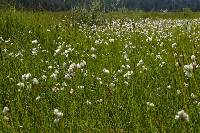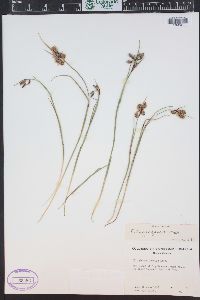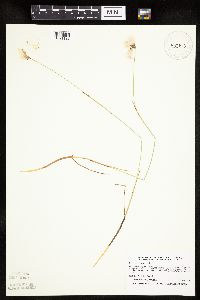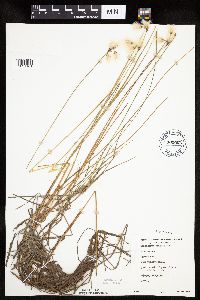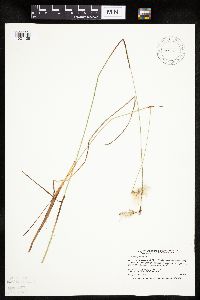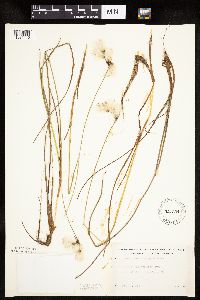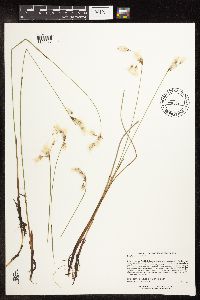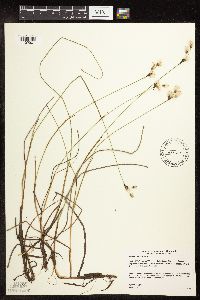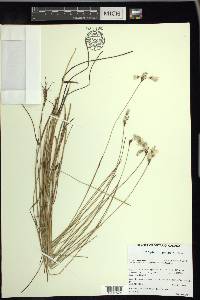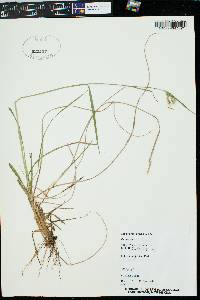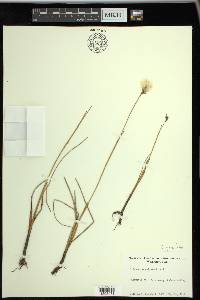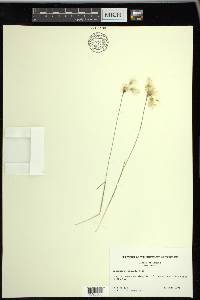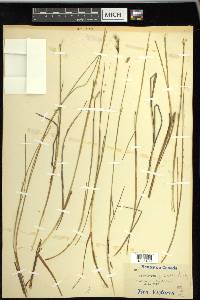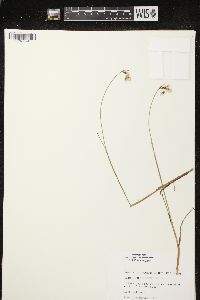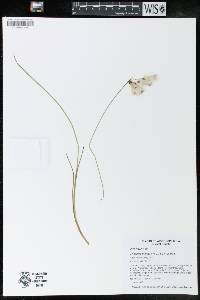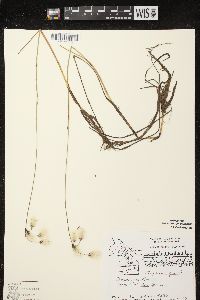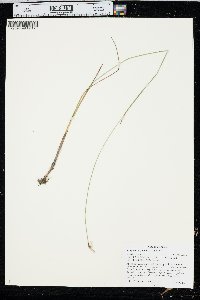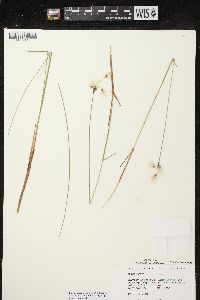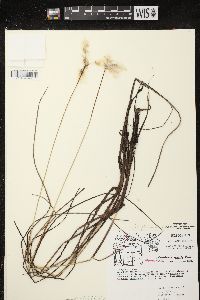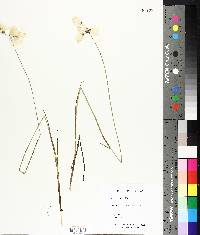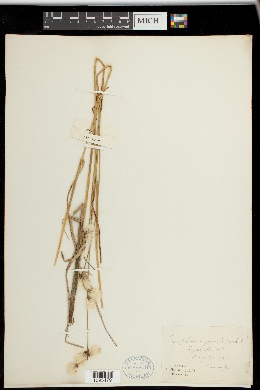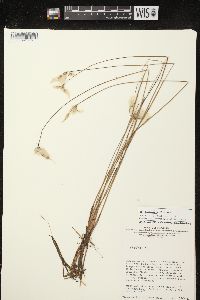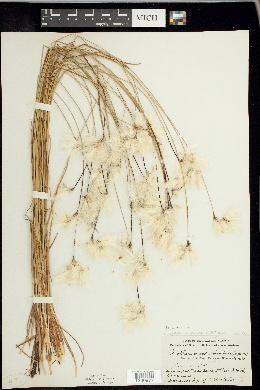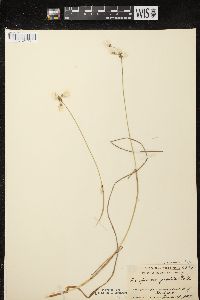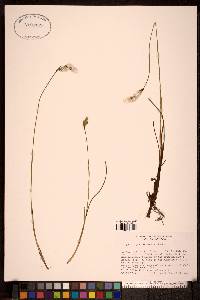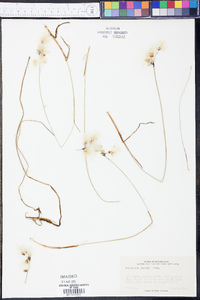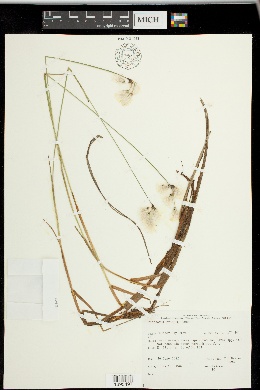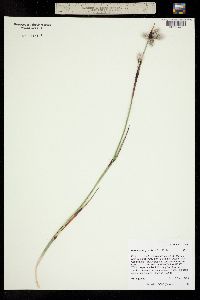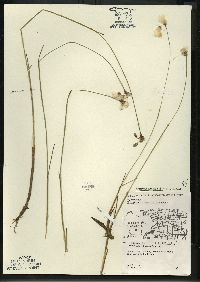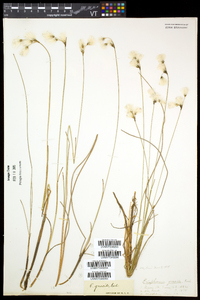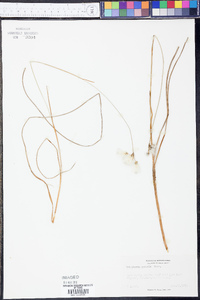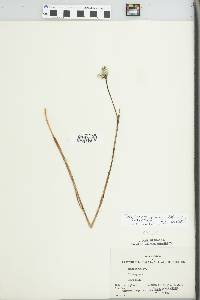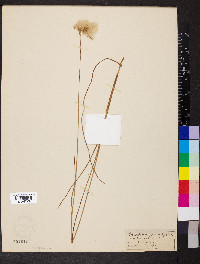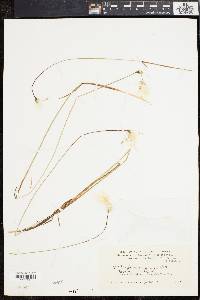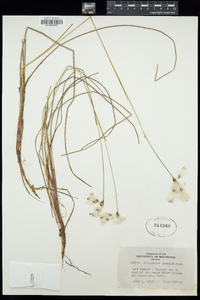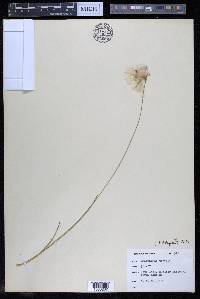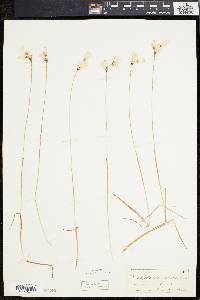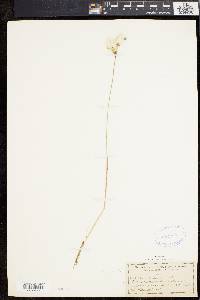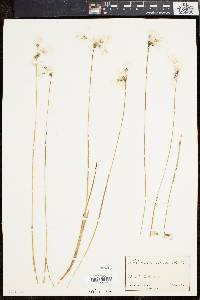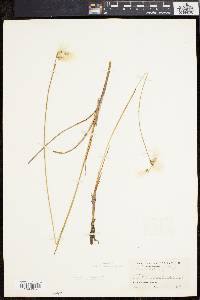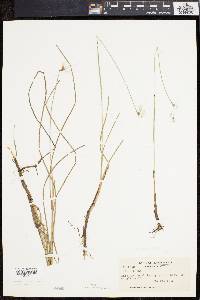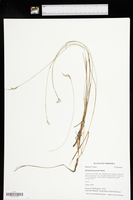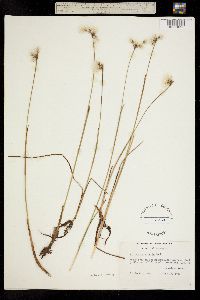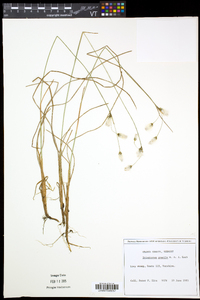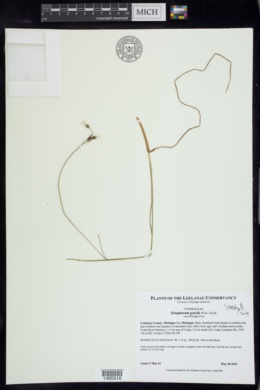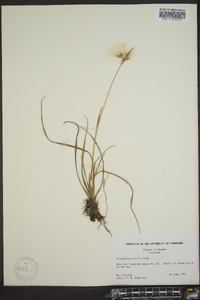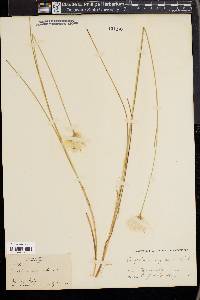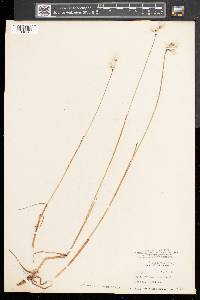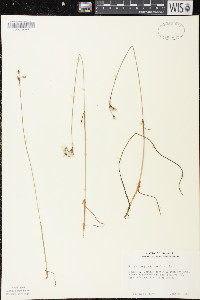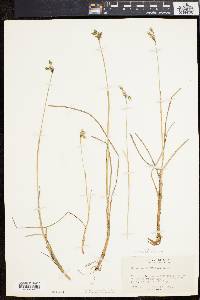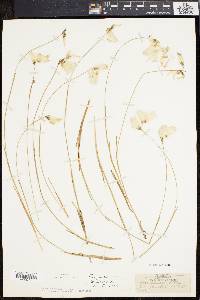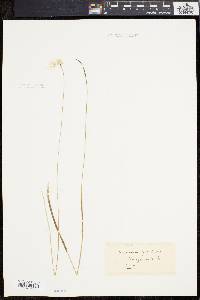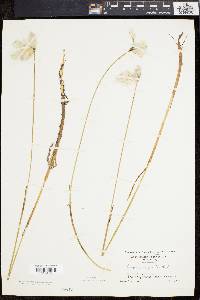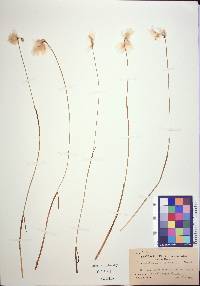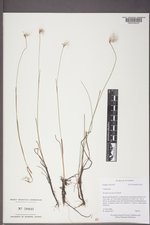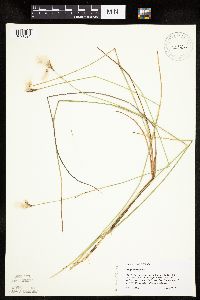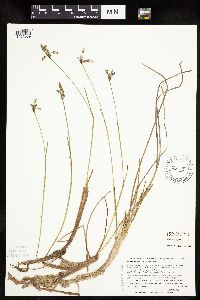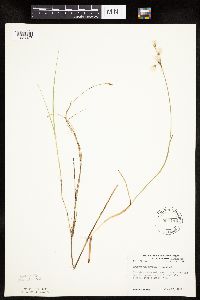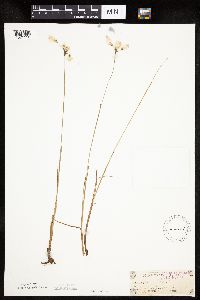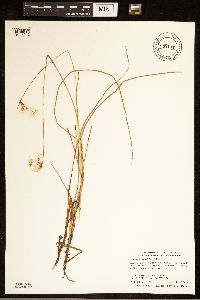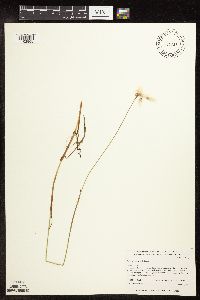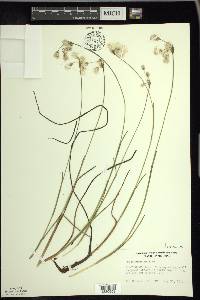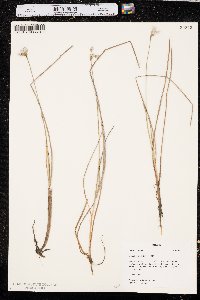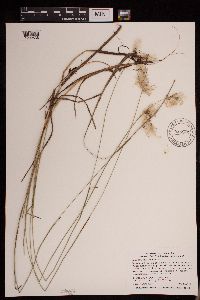Eriophorum gracile
|
|
|
|
Family: Cyperaceae
Slender Cotton-Grass, more...slender cottongrass
[Eriophorum paucinervium (Engelm.) A.A.Eaton, moreEriophorum triquetrum Hoppe] |
Plants colonial from long-creeping rhizomes. Culms 20-60 cm × 0.5-0.8 mm, distally smooth. Leaves: blades trigonous-channeled in cross section, to 30 cm × 1-2 mm; distal leaf blade 1-4 cm × 1-1.5 mm, shorter than its 3.5-5.5 cm sheath. Inflorescences: blade-bearing involucral bracts solitary, similar to distal leaf, blade usually gray or black proximally, 0.6-2 cm. Spikelets (1-)2-5, in subumbels, narrowly ovoid, 7-10 mm in flower, 15-25 mm in fruit; peduncles 5-30 mm, scabrous; scales black or dark gray with black tip, broadly ovate, 3-4 mm, scarious, margins absent or to 0.1 mm wide, 5-9-ribbed, midrib prominent, usually dilated distally, reaching tip, apex obtuse-subacute. Flowers: perianth bristles 10 or more, white, 10-15 mm, smooth; anthers 1-2.5 mm. Achenes narrowly obovoid, 1.5-3 mm. Fruiting late spring-mid summer. Meadows, bogs, shores, usually peaty, acidic substrates; 0-4000 m; St. Pierre and Miquelon; Alta., B.C., Man., N.B., Nfld. and Labr., N.W.T., N.S., Nunavut, Ont., P.E.I., Que., Sask.; Alaska, Calif., Colo., Conn., Del., Idaho, Ill., Ind., Maine, Mass., Mich., Minn., Mont., Nev., N.H., N.J., N.Y., Ohio, Oreg., Pa., R.I., Utah, Vt., Wash., Wis., Wyo.; Eurasia. Perennial herb with long-creeping rhizomes, colonial 20 cm - 0.6 m tall Leaves: alternate, to 30 cm long, 1 - 2 mm wide, linear, three-angled and channeled in cross-section, parallel-veined, with a sheathing base that encloses the stem. The uppermost leaf is 1 - 5 cm long, 1 - 1.5 mm wide, and shorter than its sheath, which is 3.5 - 5.5 cm long. Inflorescence: a terminal cluster of two to five spikelets, subtended by a blade-bearing bract. Bract solitary, upright, shorter than its inflorescence, similar to uppermost leaf, with a 0.5 - 2 cm long blade that is gray or black basally. Flowers: minute, subtended by a floral scale, lacking sepals and petals, bearing ten or more hair-like bristles that form a dense, cottony tuft when the spikelet reaches maturity. Bristles persistent, white, more or less straight, elongated, 1 - 1.5 cm long, much longer than the achene. Stamens exserted. Anthers 1 - 2.5 mm long. Pistil one. Style three-cleft. Fruit: a one-seeded achene, 1.5 - 3.5 mm long, three to four and a half times as long as wide, reverse lance-shaped, three-angled. Seed with a thin, non-adherent wall. Spikelets: on 0.5 - 3 cm long stalks, 7 - 10 mm long in flower, 1.5 - 2.5 cm long in fruit, narrowly egg-shaped. Floral scales spirally arranged, dark gray with a black apex or black, 3 - 4 mm long, broadly egg-shaped with a blunt to nearly pointed apex, five- to nine-ribbed, midrib prominent. Culms: arising singly, weak, spreading to reclining, 20 cm - 0.6 m long, to over 0.5 mm wide, nearly circular in cross-section below, more or less three-angled above, solid. Similar species: The distinguishing characteristic of this species is the solitary inflorescence bract. The other Eriophorum species of the region bear two or more of these bracts (except E. vaginatum, which bears none). Flowering: May to July Habitat and ecology: Rare in the Chicago Region. Found in bogs. Occurence in the Chicago region: native Etymology: Eriophorum means "bearing cotton," from the Greek words erion (cotton or wool) and phoros (bearing). Gracile means slender or graceful. Author: The Morton Arboretum Colonial from slender rhizomes; stems arising singly, 2-6 dm, weak, often spreading or reclining, smooth, subterete below, somewhat trigonous above; blades 1-2 mm wide, channeled, the uppermost blunt, 1-5 cm, shorter than its sheath; bract erect, shorter than its umbel; spikelets 2-5, the slender, subterete, softly and minutely hairy pedicels to 3 cm; scales ovate, obtuse, drab or blackish, at least toward the margins and tip; bristles white or sordid; achene elliptic-oblong to oblanceolate, 2.5-3.5 mm, 3-4.5 times as long as wide; 2n=60, 76. Bogs and swamps; circumboreal, s. in Amer. to Pa., Ind., Io., Colo., and Calif. Fr Apr.-July. Gleason, Henry A. & Cronquist, Arthur J. 1991. Manual of vascular plants of northeastern United States and adjacent Canada. lxxv + 910 pp. ©The New York Botanical Garden. All rights reserved. Used by permission. From Flora of Indiana (1940) by Charles C. Deam Borders of sloughs in the dune area and elsewhere in marshes and in sphagnum in bogs. ...... Indiana Coefficient of Conservatism: C = 10 Wetland Indicator Status: OBL |


